Bragi Dash review: The smartest earbuds on the planet
Bleeding edge comes at a price, though.
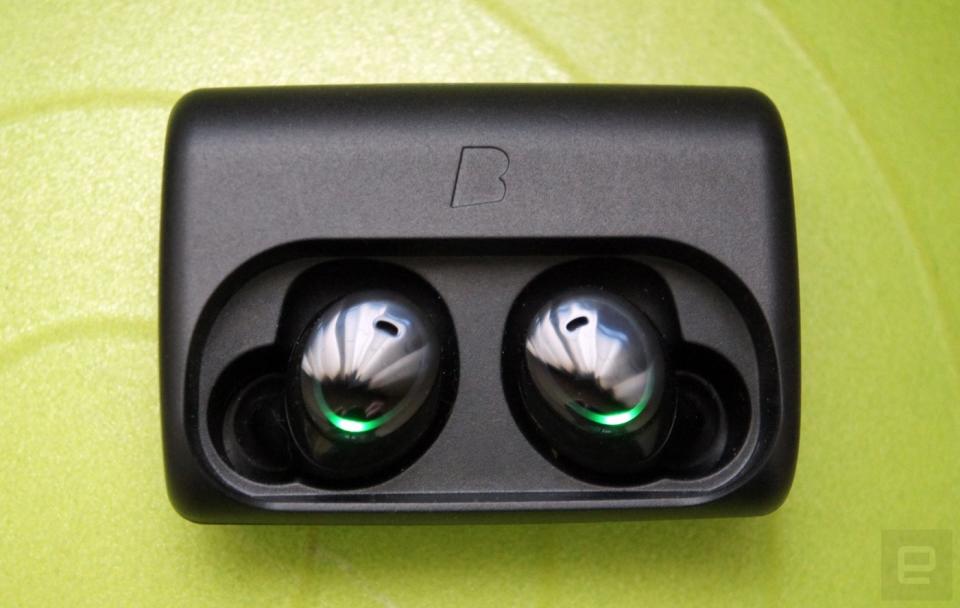
Since I started at Engadget, it's been my life's mission (possible exaggeration) to reduce the number of gadgets I carry when I run. At one point, getting ready for a workout was something of a memory test. Where's my heart-rate strap? Did I charge my MP3 player overnight? Where's the foot-pod thingy? Are my headphones where I usually leave them? What about the GPS dongle and my running watch? You get the picture.
Whether I actually need all that stuff is a question for another day, but if you're a gadget lover who likes to hit the road/trail/gym, you'll likely have your own fitness tech setup—even if it's just a phone and headphones—that could do with a little streamlining itself. If so, you'll want to know about Bragi's wireless (and we mean truly wireless) sport-centric earbuds.
Almost two years in the making, the Bragi Dash is possibly the most ambitious pair of earbuds on the market. It's a stand-alone media player with 4GB of storage; a fitness tracker, complete with a heart-rate monitor and step counter, among other things; and a general-purpose hands-free kit. While there's definitely a leaning toward the active crowd, features like touch/swipe controls and audio transparency (more on this later) are cool enough to appeal to anyone willing to pay the $299 entry fee. For me, they represent a tantalizing opportunity to strike one more item off my gear checklist.
The first time I tried the final version of the Dash (the one that you will be able to buy, not a prototype) was in the cozy confines of a Las Vegas hotel room. The second time, it was while walking toward my local running spot, a dry riverbed converted into a wonderful park. I already knew the Dash was decently loud (a real concern with earbuds, especially wireless ones, I find), but I wanted to see if that held up in the real world, where wind, cars, kids and dogs pollute an otherwise tranquil airspace. Fortunately, it did. Which is good, because there ain't no quicker way to kill my running mojo than piss-weak music volume. I was also relieved that the quality of the music is on par with my earlier experience. The balanced armature drivers deliver clean sound with minimal coloring (i.e., no ridiculous throbbing bass).
Not at any point over a five-miler did I feel I was going to lose one of the 'buds.
More important for active types is how well these things stick in your skull. Truly wireless headphones that are tethered neither to each other, nor to you, in any way have had many people assuming you'll spend as much time scouring the ground looking for the one that just popped out as you will getting any training done. It's a fair assumption. After all, I gave up on earbuds for running a long time ago, switching to sport-friendly on-ears, because I never found a pair that would stay put in my ears. I was constantly pushing them back into my sweaty lug-holes.
The good news? Not at any point over a huff-and-puff five-miler (hey, Vegas will take it out of you) did I feel I was going to lose one of the 'buds. There's possibly a certain amount of luck here. Everyone's ears are different, and Bragi's mammoth task was to design the Dash to fit as many people as possible so that they don't pop out of ears and down a drain, etc. But for me, they were a great fit out of the box.
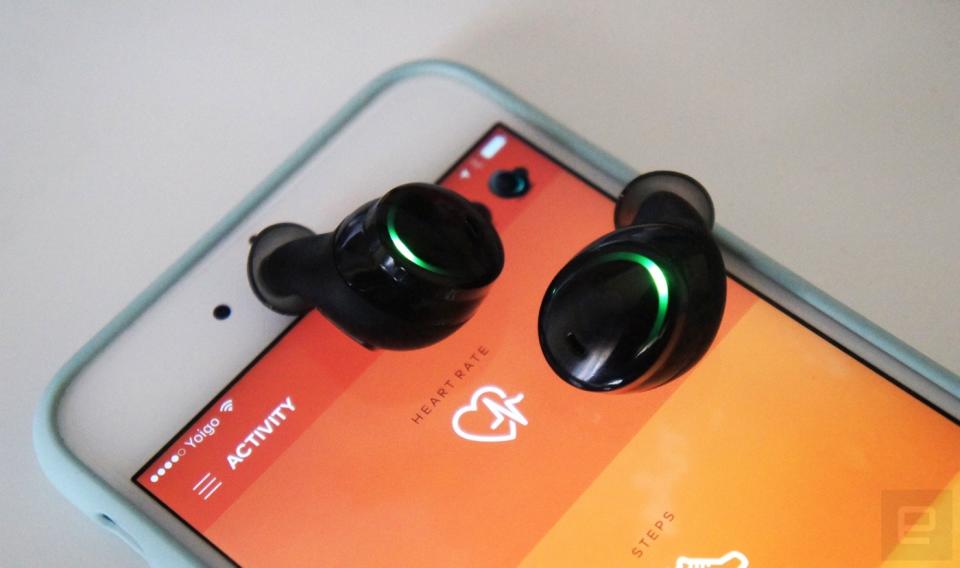
In my experience, the Dash sits snugly and comfortably inside each ear. Enough that I only needed to gently adjust them a few times during each run, but never to stop them falling — more to keep them in the sweet spot. These small adjustments are something you can usually combine with the gesture for changing a music track (two taps on the right) or getting your current running progress (two taps on the left). While I had no problems at all with fit, the first thing my partner said when she tried them on was that they felt like they were going to fall out.
Should the Dash not suit you off the bat, there are a couple of silicon skins, or "FitSleeves," in the box that will augment them to accommodate different-sized ears, but they kinda ruin the Dash's polished-black look. It may be interesting to note that I usually put the bigger tips on regular earbuds, but with the Dash I was fine with the unsleeved ("XS") bud.
To navigate menus, you need to either tap, long-press or swipe. Each time you do, a soothing voice gives you feedback.
While I was impressed with the user experience during my initial hands-on, my concern was that the gesture-based controls might fall apart once I was out in the wild. To navigate menus, you need to either tap, long-press or swipe. Each time you do, a soothing voice gives you feedback. Gestures are much easier said than done, though, once your basic faculties start to wane (after a couple of blustery miles), or when your fingers get sweaty. I did find myself swiping when I wanted to tap, and vice versa, but the menu is set up so that if you do, the worst thing to happen is that you might get told you're already at maximum volume, or that you accidentally activated transparency mode.
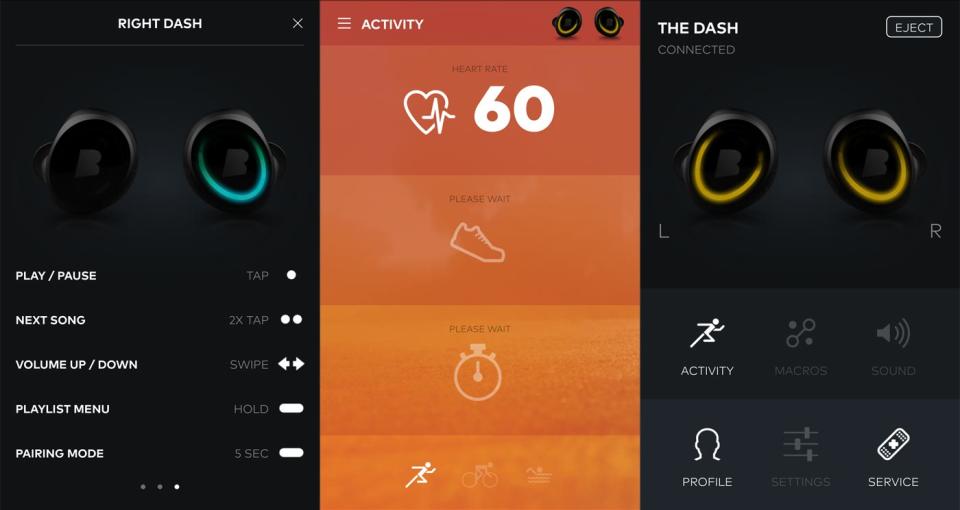
This is probably a good time to go over exactly what "transparency" is, and why it's so cool (it is). Normally the last thing I want while listening to music is to hear the outside world. That's less true while running near roads and people, and hearing your surroundings is positively essential for those daring to play music while riding a bike on the road. That's basically what transparency mode does—it uses the microphones on the Dash (the same you'd use for speaking on a hands-free call) to feed directional ambient noise into your ears.
This works whether you have music playing or not. If you don't, if just means you can speak with people without taking the headphones out—possibly what I use it for most. When you do have tunes going, it means you're able to hear that truck backing up from across the street. It's neat, and now one of my favorite features. Possibly the only downside is that certain kinds of ambient noise can be annoying, mild wind sounds that are like someone raking gravel in your ears—particularly relevant for fast-moving cyclists—and even jangling keys in your pocket can be pretty grating.
The fitness-tracking side of the Dash is, at least right now, its weakest skill. Currently, the only activity the Dash can track is running, though cycling and swimming are coming soon via an update. While the Dash is laden with sensors (optical HRM, accelerometer, gyroscope, magnetometer), the only metrics you can get are duration of workout, heart rate and total steps. What's worse is that there's not really anything to do with this info right now. It's not saved in the app, and there are no satisfying graphs breaking down your accomplishments. The in-ear assistant recaps these data at the end of your run, and that's it; it disappears into the ether. A Bragi spokesperson told me that more metrics and training logs are coming in a few months.
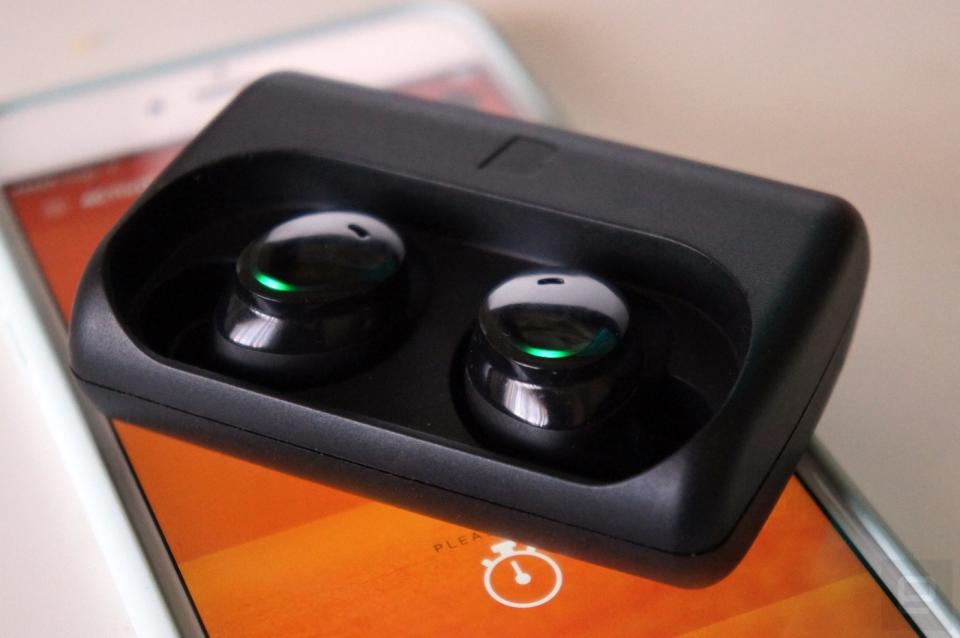
For what it's worth, though, I ran with a GPS watch to measure my distance, and the number of steps the Dash gave me, multiplied by my stride length, came close to the distance on my watch. The same goes for heart rate. On a treadmill session with the Dash, a wrist-worn heart-rate monitor and the one built into the treadmill, the three readings were close enough to call equal. It was while I was in the gym that I enjoyed the Dash the most, for a few reasons.
A big flaw in Bluetooth, especially with regard to headphones, is that outdoors the signal has nothing to bounce off, so it can diminish in range dramatically. It's a problem I first discovered on the Adidas SmartRun, where sometimes I'd need to put the watch on my other wrist, or put the headphones on the other way (only works for symmetrical headphones, obviously) to stop the music from breaking up. This is a problem for the Dash when walking with your phone in your pocket. Especially for me, since I usually keep my phone in my left pocket—connectivity was so bad, it was almost unusable. In my right pocket, it fared a little better, and anything above the waist was fine. This was with an iPhone 6S Plus and an LG G4. In the gym, however, I encountered no such issues.
At this point, it's worth remembering that the Dash is also a stand-alone media player. Walking in the outdoors while listening to the music stored directly on the Dash is, of course, seamless and without issue. The Dash stores music in playlists, which you navigate and choose with long and short taps. Skipping tracks is a double tap etc. It's how I soon came to prefer using them for training (that all-important goal of less gear). Training in the gym with just the Dash and no phone frees up anxiety about having your phone around, and stops you from distracting yourself between exercises with email and Instagram.
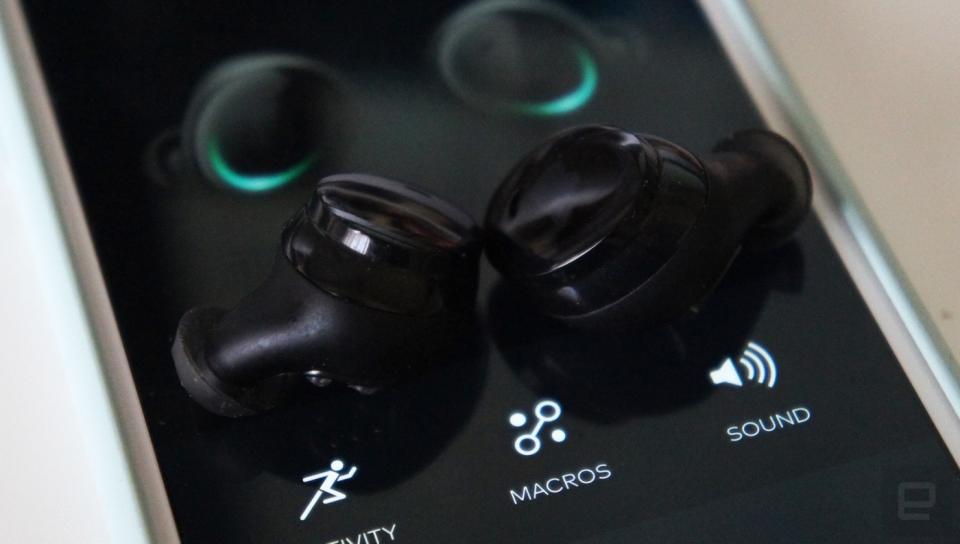
One other big anxiety you might have is battery life. The stated three hours doesn't sound like a lot, but that really depends on how you're using them. I sat with the Dash playing music while I worked, just to test out the battery life (it is, indeed, three hours or so). I rarely use 'buds this long in one session, but if you do, that's something you'll want to consider.
Any anxiety about run time should also be lessened by the fact that the case doubles as a portable charger, with a 2,200mAh battery built in. It's officially good for about five full charges of the Dash. (I tested it—it's true!. If anything, you'll get more than that.) In theory, if you're popping them in and out, you're looking at more like 15 hours of real-world use before you need to plug them in. I never found that to be an issue. The only real potential problem is that when the battery is low, the headphones glow a devilish red, and you have no idea about that until you catch yourself in a mirror. And I do mean bright red—like your ears are on fire.
There are a few other performance quirks. Once or twice, the left earbud would seemingly drop off or lose connection. (Bragi uses NFMI to connect both buds, a technology found in hearing aids.) This is partly due to the physics of wirelessly communicating through what is basically a warm melon (my head). It's something owners of those other wireless 'buds, Earin, are facing. It happened to me no more than three times, and never lasted more than a few seconds. There was the odd occasion when the software seemed to crash and reboot, with the headphones going silent for a few moments before giving me the "connected" jingle again. This also happened only a few times. I used the Dash solidly enough over many hours that the frequency of these "bugs" felt more like teething problems than a flaw. Bragi assures me that new firmware will solve these issues.
It's hard to let small glitches take the shine off what's clearly a very well-made, category-defining product. All the individual technologies exist in other devices (wireless, heart-rate monitoring, built-in media player), but to see them in action together, with a polished user interface and design, is impressive. The problem with the phone in the pocket aside (this one will vary based on physical and environmental factors), all the issues mentioned here, including the fitness tracking features, are set to be resolved with software updates. But from what I've experienced so far, it looks like Bragi has achieved what it set out to do.



















